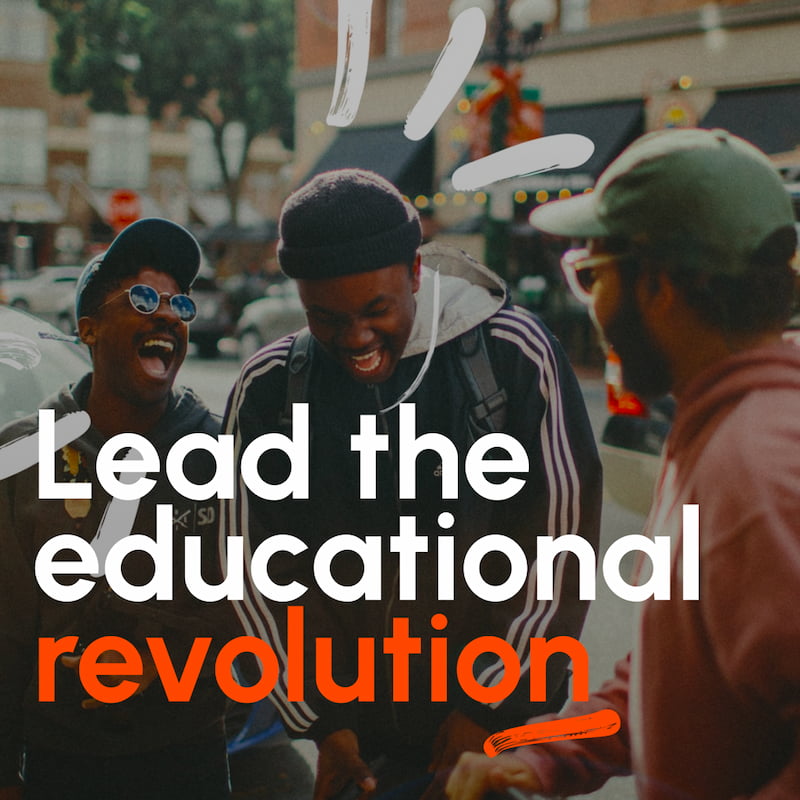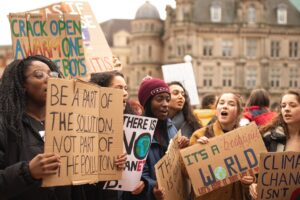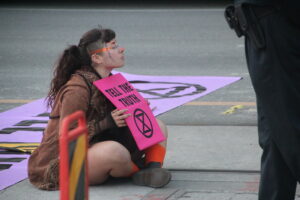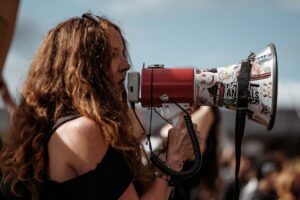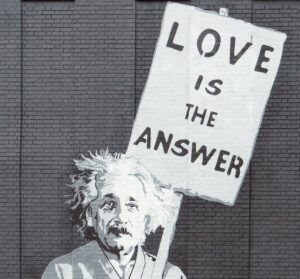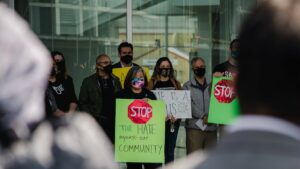This week, we continue our series of articles on activism, to imagine four main families of activists, based on their ways of action. Whatever cause motivates you – human and minorities’ rights, climate and social justice, economic inequality, or else – it’s up to you to decide if you want to take action, and if so what family suits you in terms of time, will, and energy. Online or on the ground, individually and at a local level, or as part of a collective with global reach, anything is possible!
📚 First things first, a quick reminder on the basics of activism(s)
It is important to make the distinction between the two following main categories of activism:
1°Traditional activism, where activists engage through an intermediary that is a public actor, a political party or a union. Here, all actions are always framed by the rules of the political apparatus.
2° Activism where activists use direct action, meaning they challenge an organization (e.g. governments, universities, companies, etc.) without going through the traditional intermediaries described above. It can be many things, like tweeting political representatives or striking in front of headquarters. It’s also a moral attitude, where actions are guided by values, even if it means making compromises, such as disrespecting the law.
And between the two main types of activists:
1° Direct activists want to overthrow the power in place. They are typically violent and lead illegal movements (e.g. anarchists, terrorists, independentists).
2° Activists mostly want to change their society’s way of life and consumption and are typically non-violent (e.g. environmentalist, human rights, and anti-capitalist movements).
In this article, we give examples of direct action and of non-violent ways of action.
→ If you’re lost in translation, you can read the first article of our Activism series, an overview of everything you need to know on the topic. And if you remember it all, keep on reading to learn all about activist techniques.
Click on the name of the actions to find out more.
🕸 The Internet Family
🤟 The In Real Life Family
🕺 The Show Must Go On Family
💰 The Money Family
💥 Getting started
Inspired? If you’d like to take it a step further, you can subscribe to workshops that teach you how to transform your political ideas into action, for example by joining a program listed on this international index.
Or you could start small and participate to our consultation! We provide you with all the necessary info to do so just below.
 We need you
We need you
- Why do we need to hear from you?
- From October, 14th to April 30th, young people (15-29yo) worldwide are invited to take part in Youth Talks, a massive collective intelligence consultation
- The Higher Education for Good Foundation, which is launching this initiative, is expecting tens of thousands of respondents, hopefully including you!
- Why should you participate?
- The results of the consultation will help the Foundation imagine new higher education models to grow future generations into empowered individuals able to overcome the challenges of their times.
- Thanks to an online platform and offline activities, you can share your ideas, concerns, dreams, and expectations for the future.
- Any other reason?
- Plenty! First, we believe that asking yourself such questions will provide you with a framework to better understand who you are and what you want for the future.
- Second, participating in the consultation means your answers will co-construct the educational policies of tomorrow: they will nourish a white paper that will be read by the OECD, the European Commission, and other major youth organizations.
- Third, thanks to the online open data platform we will publish thanks to your answers, it’s the occasion to show the rest of the world what young people want.
Finally, it helps plan trees as every 10 people responding to Youth Talks, we will finance the planting of 1 tree to help restore forests, create habitat for biodiversity, and make a positive social impact around the world.

